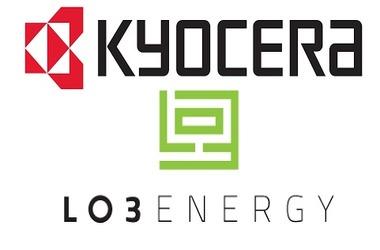
Kyocera, which has a net income of 81.79 billion yen ($ 736 million), will build small VPPs using its solar photovoltaic (PV) modules and batteries, while LO3 Energy, based in New York, will be responsible for overseeing the flow of energy based on its distributed ledger technology.
LO3’s blockchain technology is used to authenticate and record transactions, instead of using huge energy networks, to distribute energy with their own solar panels via a microgrid.
In turn, Kyocera specialized in solar power generation systems and storage batteries for government-led VPP test projects in Japan, developing new competence in remotely controlled distributed electricity resources. Lawrence Orsini, CEO of LO3 Energy, said the need to reduce greenhouse gas emissions has a tremendous impact on energy suppliers worldwide, while using blockchain can allow micro-energy transactions to encounter this challenge.
He asserted that combining the energy competence of Kyocera with the blockchain knowledge of LO3 Energy could possibly build a second generation of virtual power plants that could propel Japan’s changeover to a low-carbon society. In May 2018, global technology giant IBM collaborated with blockchain company Veridium Labs to tokenize carbon credits that enable firms to monitor their carbon output with blockchain, which also specifically addresses climate change issues.
Nature Sustainability reported in November last year that mining procedures in cryptocurrency absorb more energy than mineral mining. According to the survey, copper, gold and platinum mining necessitate less energy to produce one US dollar than major cryptocurrencies such as Bitcoin (BTC), Ethereum (ETH) and Litecoin (LTC) mining.